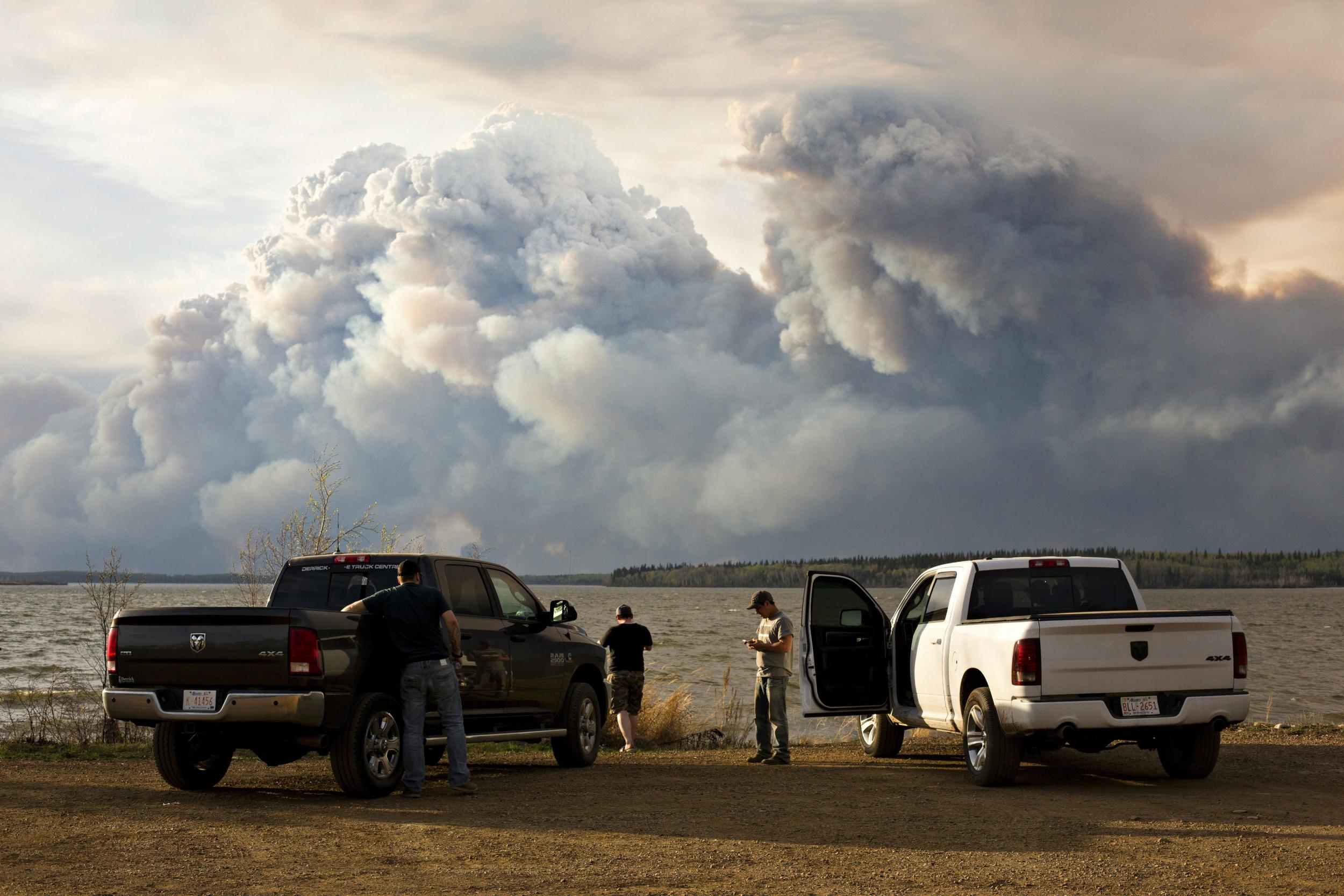Fort McMurray fire: Only weather can halt advance of massive Canada blaze
The fire is raging in the heart of the country's energy economy

Your support helps us to tell the story
From reproductive rights to climate change to Big Tech, The Independent is on the ground when the story is developing. Whether it's investigating the financials of Elon Musk's pro-Trump PAC or producing our latest documentary, 'The A Word', which shines a light on the American women fighting for reproductive rights, we know how important it is to parse out the facts from the messaging.
At such a critical moment in US history, we need reporters on the ground. Your donation allows us to keep sending journalists to speak to both sides of the story.
The Independent is trusted by Americans across the entire political spectrum. And unlike many other quality news outlets, we choose not to lock Americans out of our reporting and analysis with paywalls. We believe quality journalism should be available to everyone, paid for by those who can afford it.
Your support makes all the difference.More people have been forced to flee their homes after a massive wildfire in western Canada continued to grow with firefighters unable to stop its advance.
A state of emergency has been declared and more than 88,000 people have been forced to leave the town of Fort McMurray, Alberta, located in the heartland of Canada’s energy economy.
Late on Wednesday, flames fanned south from Fort McMurray, the main city in Canada's oil sands region. Officials issued mandatory evacuation orders for the Anzac, Gregoire Lake Estates and Fort McMurray First Nation communities, located about 30 miles south of the city, Reuters reported.

Authorities said there had been no known casualties from the blaze itself, but fatalities were reported in at least one vehicle crash along the evacuation route.
Emergency teams have said they can do little do stop the fire’s advance and that the only hope now is cooler weather slowing the blaze. The most recent weather forecast suggests cooler temperatures and possible rain, offering hope that controlling the blaze could become easier.
Thousands bunked down for the night on Wednesday in arenas, hockey rinks and oil work camps that were often short of fuel and food.

Fire also threatened the airport, and web cam images showed black smoke engulfing the area late on Wednesday evening. Officials confirmed that a hotel north of the main terminal had caught fire, but as the sun rose on Thursday new images of the airport showed no obvious damage the news agency said.
Major oil sands facilities were not in the path of the flames, but companies' efforts to help employees and evacuees and protect pipelines affected production and helped boost the price of crude.
Austrian consultancy JBC Energy estimated that some 500,000 barrels per day of capacity was offline.
Subscribe to Independent Premium to bookmark this article
Want to bookmark your favourite articles and stories to read or reference later? Start your Independent Premium subscription today.
Join our commenting forum
Join thought-provoking conversations, follow other Independent readers and see their replies
Comments